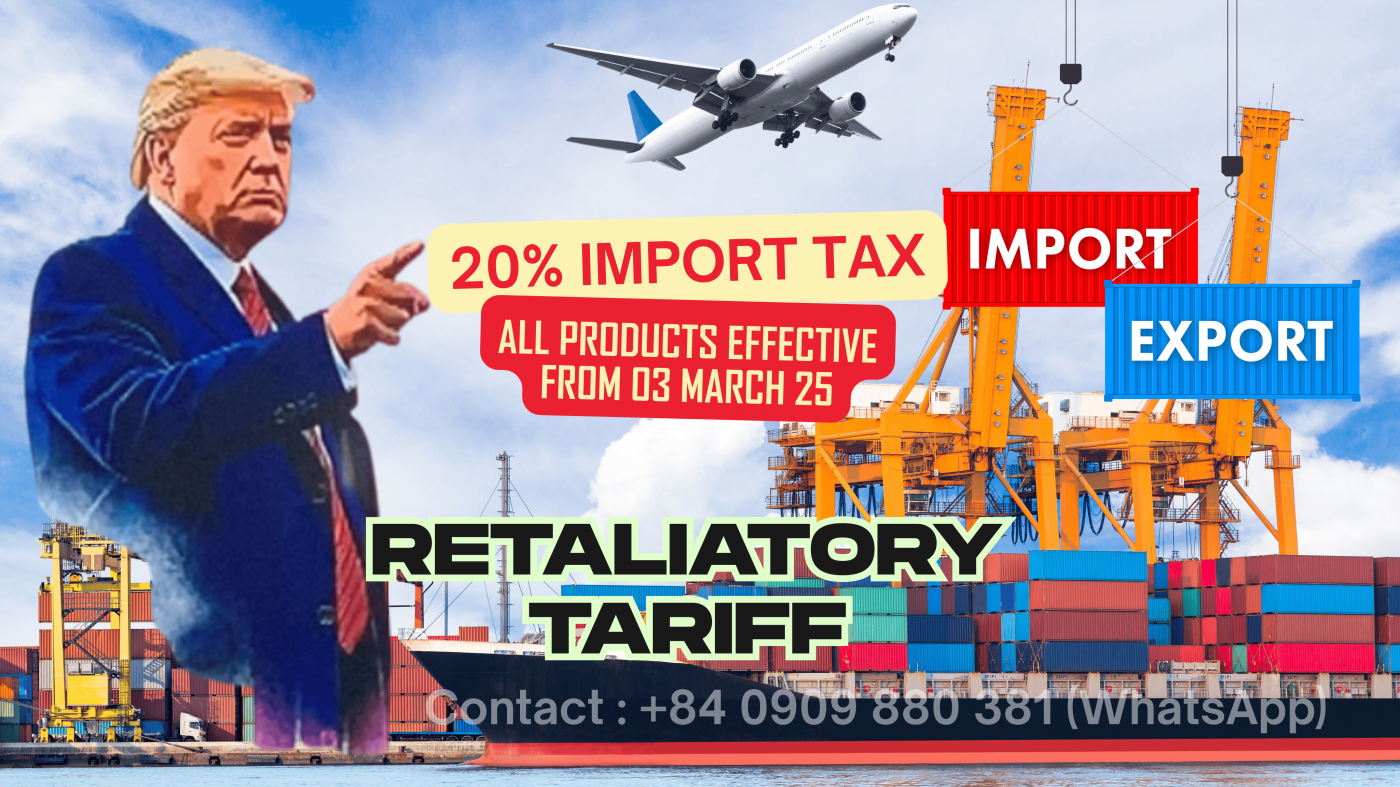1. What's the Reciprocal Tariffs?
Reciprocal Tariffs are taxes that one country imposes on imports from another country in response to its own tariff policies or unfair trade practices. The objectives of reciprocal tariffs are to:
✔ Put pressure on a trading partner to change its policies.
✔ Protect domestic industries from unfair competition.
✔ Equalize the impact of initial tariff measures imposed by another country.

2. Analysis of Reciprocal Tariffs and their impact on the US economy
The United States is one of the largest economies in the world and maintains extensive trade relations. When the U.S. imposes tariffs on imported goods from other countries, its trade partners often respond by imposing retaliatory tariffs. This leads to several significant impacts:
2.1. Inflation and rising consumer costs
- Direct impact: Retaliatory tariffs increase the prices of imported goods, which make up a significant portion of the U.S. supply chain and consumer market. For example, consumer goods from China (such as toys and electronics) or food products from Mexico and Canada become more expensive, pushing up the cost of living for Americans. The Peterson Institute for International Economics estimates that each U.S. household could end up paying an additional $1,700 to $2,600 per year.
- Domino effect: U.S. businesses that import raw materials or components (such as steel and aluminum) will face higher production costs, which in turn drives up the prices of domestic products. This can lead to persistent inflation, especially as the Federal Reserve (Fed) is working to contain it.
2.2. Economic Growth Slowdown
- GDP decline: Economists, such as Gregory Daco from EY, predict that retaliatory tariffs could cause the U.S. GDP to fall by 1.5–2.1% in 2025–2026 due to their negative impact on investment and consumer spending. The Atlanta Fed also forecasts that GDP in Q1 2025 could decline by 2.8% if consumer spending weakens.
- Supply chain disruptions: The U.S. heavily relies on imports from Canada, Mexico, and China (with nearly $2.2 trillion in two-way trade annually). Tariffs disrupt supply chains, creating challenges for industries such as automotive, construction, and technology.
2.3. Retaliatory Responses from Trade Partners
- Trade war: Countries targeted by retaliatory tariffs—such as China, Canada, and the EU—have implemented or are planning countermeasures. China imposed 10–15% tariffs on U.S. goods starting March 10, 2025, while Canada and Mexico may target U.S. energy and agricultural products. This harms U.S. export sectors, especially agriculture (as seen during Trump’s first term).
- Loss of export markets: Retaliatory measures may cause the U.S. to lose key export markets, weakening the global competitiveness of American businesses.
2.4. Pressure on financial markets
- Market volatility: The instability caused by retaliatory tariffs could weaken investor confidence, leading to volatility in stock and bond markets. Some experts warn of the risk of “stagflation” (slow growth, high inflation).
- USD exchange rate: While some argue that retaliatory tariffs could strengthen the USD (due to reduced imports), this would also make U.S. exports more expensive, disadvantaging industries that rely on exports.
3. Assess the benefits and risks
- Potential benefits: Retaliatory tariffs could encourage foreign companies to establish factories in the U.S., creating jobs in industries such as steel and automotive. It also provides significant revenue for the government, which can be used to fund domestic tax reduction policies.
- Long-term risks: However, economists like Mary Lovely (Peterson Institute) and Mark Zandi (Moody’s) argue that retaliatory tariffs do not address the root causes of the trade deficit, which lie in the unique characteristics of the U.S. economy (high consumption, low savings). Instead, they may lead to a recession if applied for an extended period without an effective negotiation strategy.
4. Conclusion
- Retaliatory tariffs are a “double-edged sword” for the U.S. economy. In the short term, they may bring certain political and economic benefits, such as protecting domestic industries and increasing government revenue.
- However, pressures from inflation, slowed growth, and trade wars could weaken the U.S. economy in the medium and long term. To mitigate risks, the Trump administration needs to combine tariffs with flexible trade negotiations, avoiding escalation of tensions with major partners like China, the EU, and North American neighbors. In the current context (as of April 2, 2025), when this policy has officially been announced, the actual impact will depend on how the U.S. implements it and the response from the international community.




 Tiếng Việt
Tiếng Việt